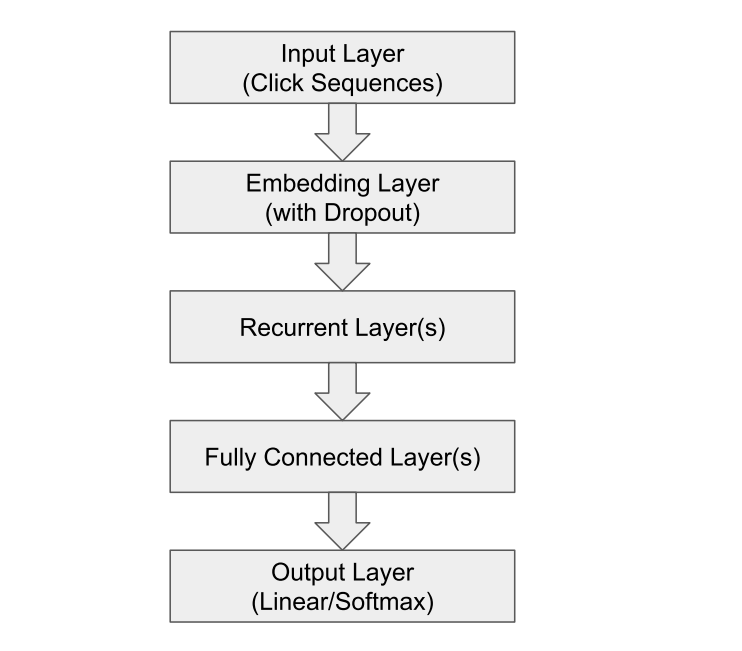GRU4Rec¶
Introduction¶
Title: Improved Recurrent Neural Networks for Session-based Recommendations
Authors: Yong Kiam Tan, Xinxing Xu, Yong Liu
Abstract: Recurrent neural networks (RNNs) were recently proposed for the session-based recommendation task. The models showed promising improvements over traditional recommendation approaches. In this work, we further study RNNbased models for session-based recommendations. We propose the application of two techniques to improve model performance, namely, data augmentation, and a method to account for shifts in the input data distribution. We also empirically study the use of generalised distillation, and a novel alternative model that directly predicts item embeddings. Experiments on the RecSys Challenge 2015 dataset demonstrate relative improvements of 12.8% and 14.8% over previously reported results on the Recall@20 and Mean Reciprocal Rank@20 metrics respectively.

Running with RecBole¶
Model Hyper-Parameters:
embedding_size (int): The embedding size of items. Defaults to64.hidden_size (int): The number of features in the hidden state. Defaults to128.num_layers (int): The number of layers in GRU. Defaults to1.dropout_prob (float): The dropout rate. Defaults to0.3.loss_type (str): The type of loss function. If it set to'CE', the training task is regarded as a multi-classification task and the target item is the ground truth. In this way, negative sampling is not needed. If it set to'BPR', the training task will be optimized in the pair-wise way, which maximize the difference between positive item and negative item. In this way, negative sampling is necessary, such as setting--neg_sampling="{'uniform': 1}". Defaults to'CE'. Range in['BPR', 'CE'].
A Running Example:
Write the following code to a python file, such as run.py
from recbole.quick_start import run_recbole
parameter_dict = {
'neg_sampling': None,
}
run_recbole(model='GRU4Rec', dataset='ml-100k', config_dict=parameter_dict)
And then:
python run.py
Tuning Hyper Parameters¶
If you want to use HyperTuning to tune hyper parameters of this model, you can copy the following settings and name it as hyper.test.
learning_rate choice [0.01,0.005,0.001,0.0005,0.0001]
dropout_prob choice [0.0,0.1,0.2,0.3,0.4,0.5]
num_layers choice [1,2,3]
hidden_size choice [128]
Note that we just provide these hyper parameter ranges for reference only, and we can not guarantee that they are the optimal range of this model.
Then, with the source code of RecBole (you can download it from GitHub), you can run the run_hyper.py to tuning:
python run_hyper.py --model=[model_name] --dataset=[dataset_name] --config_files=[config_files_path] --params_file=hyper.test
For more details about Parameter Tuning, refer to Parameter Tuning.
If you want to change parameters, dataset or evaluation settings, take a look at